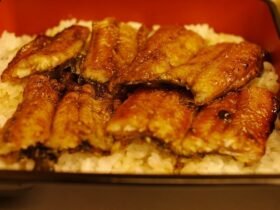“Tofu” yes nowadays a well-known product aka food not essentially in Asia but all around the world now, has quite an aroma indeed to itself. So we here are going to discuss just that lingering in and out of its boundaries, from knowing how it is made to knowing the place where it first came into being, its healthy traits, etc. Though it may sound a bit crazy to go way deep about a portion of food but let’s kick it for the sake of our friend here and what it has to offer.
Tracing the origins of Tofu
- Similar to its various family members, i.e. are the products aka foods made out of soya or that were somehow based on it? Tofu also originated in China. The legend tells a story of a Chinese cook who accidentally curdled Soy milk by adding some Negari seaweed.
- The tofu was first recorded to be made during the Chinese Han dynasty predated 2000 years ago; Chinese legends associate its invention to Prince Liu An of Anhui province, later its history and production can be tracked in Japan.
[adinserter block=”6″]
What is Tofu made out of?
Tofu, the simplest of food, has quite a simple procedure in its making, so there is not much to go about what tofu is made out of? But there is not a thing less even.
- Tofu is made out of condensed soy milk, or it may very well be called processed soybean curd, which in turn comes from soy milk created by and through soybeans grounded in water. Heated and coagulated as the process goes with minerals such as calcium or magnesium salts, this fluid is then passed in a block and sold as Tofu.
Types of Tofu
Simple as it may be, but it comes in many variations that are different but similar. Some of them are.
-
Silken
The Japanese-style tofu is silky creamy and has the highest water content of all its counterparts, which makes it fall into pieces if you try to hold it in your hands, often compared to beretta cheese.
-
Regular
Mainly used in Asian dishes, it is a little on the rough side as it just touches it and comes back while still being soft, making it easier to blend into flavours for it.
-
Firm
Similarly, there are others Ex. Super Firm and Extra Firm Seasoned Tofu etc.
[adinserter block=”7″]
What does it have to offer?
Tofu is often considered in many ways, whether it be a delicacy, guilty pleasure, breakfast buddy, etc. but does it have some real health benefits? Now, this is where tofu shines. Watch how.
- It can reduce the risk for cardiovascular diseases as soy food intake can improve the elasticity of your blood vessels.
- Researches have shown that the regular intake of Tofu reduced the chances of breast cancer in women to 48 – 56%.
- Over a whopping 61% lower chance of stomach related cancer making Tofu all the more viable as a health buddy
- It May boost your blood sugar control, but there are not many facts to back this claim.
- Taking over 50 grams of soy protein can improve your blood fat level, in turn, a 10% lower risk of heart disease.
- Some of the potential other benefits worth mentioning are aids to bone health, brain functioning, weight loss, skin elasticity, and many others.
[adinserter block=”8″]
Conclusion
Tofu is your regular food, usually in China. When discussing its ingredients, they are not very extravagant. The ingredients in Tofu are a mixture of condensed soy milk or soya bean curd (well processed).
Frequently Asked Questions
-
What is Tofu usually paired with?
Tofu is likely to be used in various combinations. Some of the pairings include pasta, noodles, soups, pizzas, burgers etc.
-
What are the most common misconceptions about Tofu?
The misconception that people hold very dear about tofu is, Tofu is not healthy. This is very wrong. Tofu, in fact, is rich in calcium, magnesium, selenium etc. and is a very good source of protein.
-
What places is Tofu most popular in?
Tofu is Asian cuisine. It is most popular in the Eastern and Southern areas of Asia.
[adinserter block=”6″]


Leave a Reply